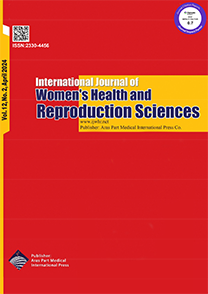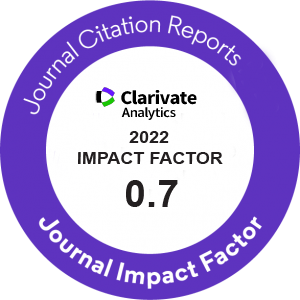| Original Article | |
| Dual FSH and HCG Triggering Increases Clinical Pregnancy Rate in IUI for Unexplained Infertility: A Randomized Controlled Trial | |
| Mahshid Alborzi1, Khadijeh Pouya2, Reza Asadi maman3, Amir Fattahi4, Kobra Hamdi5, Parvin Hakimi5 | |
| 1Gynecology and Obstetrics Department, Infertility Center, Jahrom University of Medical Sciences (JUMS), Jahrom, Iran 2Department of Gynecology and Obstetrics, Faculty of Medicine, Tabriz Medical Sciences Islamic Azad University, Tabriz, Iran 3General Medical Student, Tabriz University of Medical Sciences, Tabriz, Iran 4Department of Reproductive Biology, Faculty of Advanced Medical Sciences, Tabriz University of Medical Sciences, Tabriz, Iran 5Women’s Reproductive Health Research Center, Tabriz University of Medical Sciences, Tabriz, Iran |
|
|
IJWHR 2024; 12: 083-088 DOI: 10.15296/ijwhr.2024.6010 Viewed : 156 times Downloaded : 158 times. Keywords : Unexplained infertility, Pregnancy, Assisted reproduction technology, Oocyte |
|
| Full Text(PDF) | Related Articles | |
| Abstract | |
Objectives: Despite advancements in the assisted reproduction technology (ART), the proportion of unexplained infertility is 30% among infertile couples. This study aimed to explore the pregnancy proportions in women with primary unexplained infertility who were given follicle-stimulating hormone (FSH) along with the human chorionic gonadotropin (hCG) trigger compared with those who were only given the hCG trigger. Materials and Methods: In this randomized controlled trial, the women eligible for intrauterine insemination (IUI) were investigated between April 1, 2022 and April 1, 2023 at Al-Zahra referral academic center. To this end, a total of 130 women were primarily screened and then 50 ones were excluded from the study based on the pre-defined inclusion criteria. Therefore, the final study population consisted of 80 eligible women with primary unexplained infertility, who were randomly assigned to the intervention group (n=40) and control group (n=40). The patients in the intervention group received two ampules (75 IU) of FSH in addition to two ampoules (5000 IU) of hCG, while the patients in the control group only received hCG. Both groups underwent IUI 34-36 hours after the hCG triggering. The biochemical and clinical pregnancy rates were evaluated as primary outcomes. Results: No significant differences were observed between the baseline and clinical characteristics, including endometrial thickness and the number of follicles before intervention (P>0.05). However, the clinical pregnancy rate was higher in the dual FSH and hCG group (40.0%, 16/40) than that in the hCG group (20.0%, 8/40) (P = 0.048). The chemical pregnancy rates were 32.5% (13/40) and 37.5% (15/40) for the hCG and dual FSH and hCG groups, respectively. No significant relationships were detected between the biochemical pregnancy and the number of gestational sacs (P>0.05). Conclusions: The dual administration of FSH and hCG for oocytes, compared with the injection of hCG alone, improved the clinical pregnancy. The biochemical pregnancy and live birth rates as well as the number of gestational sacs were not improved significantly. |
Cite By, Google Scholar
Google Scholar
PubMed
Online Submission System
 IJWHR ENDNOTE ® Style
IJWHR ENDNOTE ® Style
 Tutorials
Tutorials
 Publication Charge
Women's Reproductive Health Research Center
About Journal
Publication Charge
Women's Reproductive Health Research Center
About Journal
Aras Part Medical International Press Editor-in-Chief
Arash Khaki
Mertihan Kurdoglu Deputy Editor
Zafer Akan






















